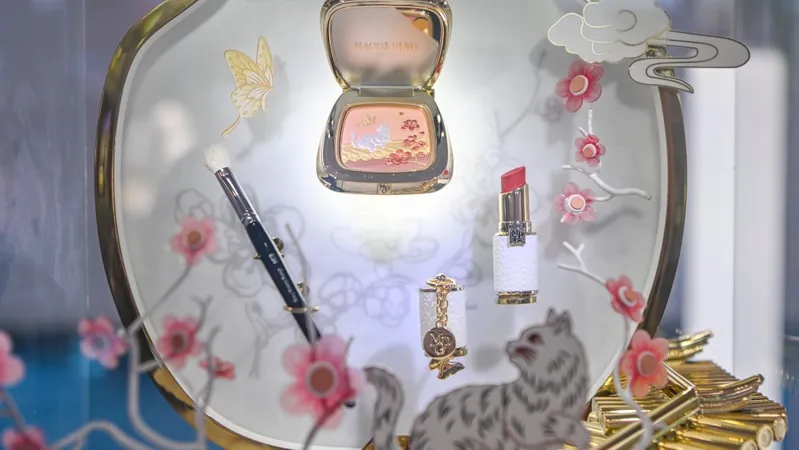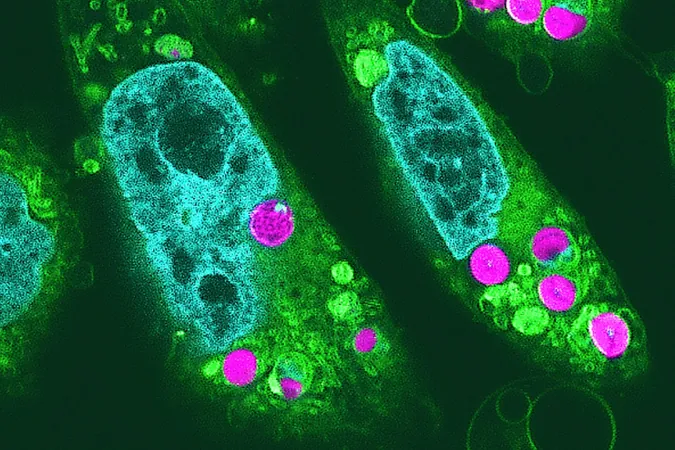
Shocking Discovery: 16-Year-Old’s Stomach Pain Linked to a Massive Hairball!
2024-11-22
Author: Lok
Introduction
In a bizarre medical case that could almost be mistaken for a horror film plot, a 16-year-old girl’s persistent stomach pain turned out to be caused by a giant hairball lodged in her gastrointestinal tract. This extraordinary incident was recently documented in a report published in the prestigious New England Journal of Medicine, showcasing the peculiarities that occasionally arise in medical settings, particularly at Massachusetts General Hospital in Boston.
Initial Symptoms and Missed Diagnosis
The girl first sought medical attention after weeks of intermittent vomiting and intense abdominal pain, which escalated to a shocking 8 on a pain scale from 1 to 10. Despite her family taking her to a local emergency room on multiple occasions, her symptoms remained a mystery. Initially dismissed with medications that proved ineffective, the young patient endured pain that disrupted her daily life and sleep.
Medical Investigation and Discovery
It wasn’t until she presented to Massachusetts General Hospital that doctors began to unravel the mystery behind her suffering. Their investigations led them to suspect a gastric outlet obstruction, a condition characterized by a physical blockage between the stomach and small intestine. In many cases, this type of obstruction is a result of a bezoar—a mass of indigestible material trapped in the digestive system, often comprised of hair or fibrous substances.
Endoscopic Procedure and Findings
To confirm their suspicions, doctors employed an endoscopic procedure, using a camera-equipped tube to explore her upper gastrointestinal tract. The alarming discovery revealed a sizeable trichobezoar—an accumulation of hair—beginning to invade her small intestine. Incredibly, the medical team was able to safely extract the hairball using non-invasive techniques, avoiding the need for surgical intervention.
Understanding Trichobezoars and Psychological Aspects
Hairballs in humans can often be traced back to a condition known as trichophagia, where individuals have an uncontrollable compulsion to consume their own hair. This phenomenon is typically coupled with trichotillomania, characterized by the urge to pull out hair. When interviewed, the girl denied such behaviors; however, medical experts indicate that many who suffer from these conditions may feel embarrassed and reluctant to discuss them openly.
Recovery and Broader Implications
Remarkably, the girl made a swift recovery post-procedure and reported no lingering pain within a month. Although a referral for psychological evaluation was suggested, she opted to pursue hypnotherapy instead, encouraged by friends. This story serves not only as a medical anomaly but also highlights the importance of thorough examination in cases that present with ambiguous symptoms.
Conclusion
As odd as it may seem, this case opens a window into the often-hidden struggles of those dealing with compulsive disorders, prompting a broader conversation about mental health and body image. Could this be a wake-up call for parents and teens alike? The mystery of trichobezoars is far from over, and experts urge vigilance when it comes to eating habits and recognizing underlying mental health issues.



 Brasil (PT)
Brasil (PT)
 Canada (EN)
Canada (EN)
 Chile (ES)
Chile (ES)
 España (ES)
España (ES)
 France (FR)
France (FR)
 Hong Kong (EN)
Hong Kong (EN)
 Italia (IT)
Italia (IT)
 日本 (JA)
日本 (JA)
 Magyarország (HU)
Magyarország (HU)
 Norge (NO)
Norge (NO)
 Polska (PL)
Polska (PL)
 Schweiz (DE)
Schweiz (DE)
 Singapore (EN)
Singapore (EN)
 Sverige (SV)
Sverige (SV)
 Suomi (FI)
Suomi (FI)
 Türkiye (TR)
Türkiye (TR)